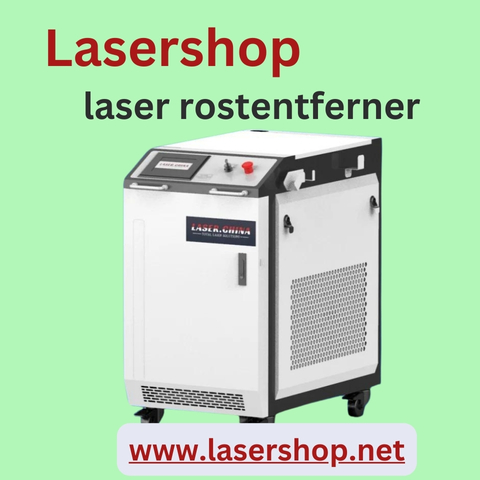
by ALI65 | Oct 10, 2025 | Others
Die Pflege von Metalloberflächen kann mühsam sein, besonders wenn Rost ins Spiel kommt. Herkömmliche Methoden wie Schleifen oder chemische Rostentferner sind oft zeitaufwendig und umweltschädlich. Hier kommt der Laser Rostentferner ins Spiel – eine moderne, effiziente und saubere Lösung, die von lasershop angeboten wird.
Was ist ein Laser Rostentferner?
Ein Laser Rostentferner ist ein Gerät, das Rost auf Metalloberflächen mithilfe eines gebündelten Laserstrahls entfernt. Diese Methode ist präzise, zerstört das Grundmaterial nicht und hinterlässt eine saubere Oberfläche, die sofort weiterbearbeitet werden kann. Lasershop bietet hier eine breite Palette an hochwertigen Geräten, die sowohl für Profis als auch für Hobbyanwender geeignet sind.
Vorteile der Laser Rostentfernung
Die Nutzung eines Laser Rostentferners hat viele Vorteile:
-
Effizienz: Rost wird schnell und gründlich entfernt.
-
Umweltfreundlich: Keine Chemikalien, keine schädlichen Rückstände.
-
Präzision: Selbst schwer zugängliche Stellen werden erreicht.
-
Materialschonend: Das Metall bleibt unbeschädigt.
Mit diesen Eigenschaften revolutioniert der Laser Rostentferner die Metallpflege und spart sowohl Zeit als auch Kosten.
Einsatzbereiche des Laser Rostentferners
Ein Laser Rostentferner ist vielseitig einsetzbar:
-
Restaurierung von Oldtimern und historischen Metallobjekten
-
Vorbereitung von Oberflächen für Lackierung oder Beschichtung
-
Industrielle Metallreinigung
-
Heimwerkerprojekte
Die Geräte von lasershop sind dabei besonders anwenderfreundlich und robust, sodass sie sowohl im professionellen Bereich als auch im Hobbybereich zuverlässige Ergebnisse liefern.
Tipps für den optimalen Einsatz
Um die besten Ergebnisse zu erzielen, sollten Sie folgende Punkte beachten:
-
Arbeiten Sie immer in gut belüfteten Räumen oder im Freien.
-
Tragen Sie geeignete Schutzkleidung und Schutzbrille.
-
Beginnen Sie mit niedriger Laserleistung und steigern Sie diese je nach Bedarf.
Lasershop bietet nicht nur die Geräte selbst, sondern auch eine ausführliche Beratung und hilfreiche Anleitungen, damit Sie den Laser Rostentferner optimal einsetzen können.
Warum lasershop die beste Wahl ist
Lasershop zeichnet sich durch hochwertige Produkte, exzellenten Kundenservice und fachkundige Beratung aus. Wer auf der Suche nach einem leistungsstarken Laser Rostentferner ist, findet hier eine Auswahl modernster Geräte, die den neuesten technischen Standards entsprechen.
Fazit
Ein Laser Rostentferner von lasershop ist die ideale Lösung für alle, die Rost effizient, präzise und umweltfreundlich entfernen möchten. Egal, ob Sie Profi oder Heimwerker sind – diese innovative Technologie spart Zeit, schont Material und liefert hervorragende Ergebnisse. Vertrauen Sie auf die Erfahrung und Qualität von lasershop, um Ihre Metallprojekte auf ein neues Level zu heben.
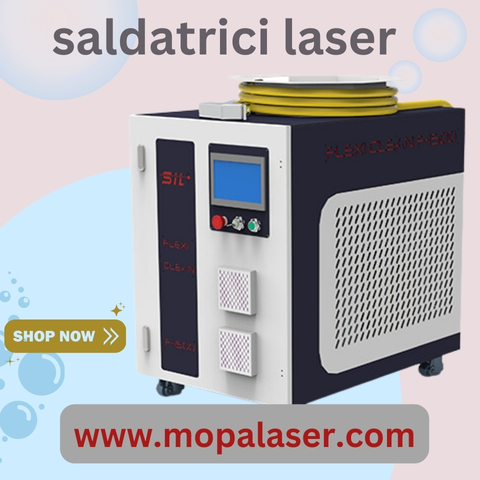
by ALI65 | Oct 10, 2025 | Others
Nel panorama delle tecnologie industriali, le saldatrici laser MOPA (Master Oscillator Power Amplifier) rappresentano una soluzione all’avanguardia per garantire saldature di alta qualità su una vasta gamma di materiali. MopaLaser emerge come un marchio di riferimento in questo settore, offrendo dispositivi che combinano potenza, precisione e versatilità.
Cos’è una saldatrice laser MOPA?
Una saldatrice laser MOPA utilizza una tecnologia avanzata che consente di modulare la durata dell’impulso laser, offrendo un controllo preciso sull’energia e sulla profondità di penetrazione. Questo rende possibile ottenere saldature di alta qualità su materiali come acciaio, alluminio e titanio, con una minima deformazione termica.
Vantaggi delle saldatrici laser MOPA
1. Precisione e controllo
Le saldatrici laser MOPA permettono di regolare con estrema precisione la durata dell’impulso e la frequenza, garantendo saldature uniformi e di alta qualità anche su superfici complesse.
2. Versatilità applicativa
Grazie alla loro capacità di adattarsi a diversi materiali e spessori, le saldatrici laser MOPA sono ideali per applicazioni in vari settori, tra cui automotive, elettronica e aerospaziale.
3. Efficienza energetica
L’uso di tecnologia avanzata consente alle saldatrici laser MOPA di operare con un’efficienza energetica superiore, riducendo i consumi e i costi operativi.
MopaLaser: un marchio di eccellenza
MopaLaser si distingue per la sua dedizione all’innovazione e alla qualità. Le sue saldatrici laser MOPA sono progettate per offrire prestazioni superiori, durata nel tempo e facilità d’uso. Ogni dispositivo è il risultato di anni di ricerca e sviluppo, con l’obiettivo di soddisfare le esigenze di professionisti e aziende in tutto il mondo.
Settori di applicazione delle saldatrici laser MOPA
Le saldatrici laser MOPA trovano impiego in numerosi settori:
-
Automotive: per la saldatura di componenti in metallo con alta precisione.
-
Elettronica: per la saldatura di circuiti stampati e componenti delicati.
-
Aerospaziale: per la saldatura di materiali ad alte prestazioni.
-
Medico: per la produzione di dispositivi medici con tolleranze rigorose.
Conclusioni
Le saldatrici laser MOPA rappresentano una scelta ideale per chi cerca precisione, affidabilità e innovazione. Con MopaLaser, è possibile accedere a tecnologie all’avanguardia che rispondono alle sfide moderne della saldatura industriale. Investire in una saldatrice laser MOPA significa scegliere qualità e performance superiori per ogni applicazione.

by freyaparker | Oct 10, 2025 | Others
Notary services are essential for authenticating important documents, from financial forms to legal agreements. Many people wonder about the costs and procedures, especially when it comes to large banks like Wells Fargo. Understanding these fees and policies can help you plan ahead and avoid unexpected expenses.
Wells Fargo provides notary services at select branches across the United States. Their services are designed to help customers verify signatures on critical documents, including mortgage papers, power of attorney, and legal affidavits. While the process is straightforward, it’s important to know what you might be charged before visiting a branch.
The fees for notary services at Wells Fargo can vary depending on the type of account you hold. Typically, customers with a Wells Fargo checking or savings account can access notary services at no extra cost for personal documents. However, non-customers or those requiring notary services for business or complex legal documents may be charged a fee, often ranging from $10 to $25 per document. Fees may also vary depending on state regulations, as notary rules differ across the country.
If you are in New Jersey, and looking for professional assistance beyond traditional bank services, you may want to explore Notary Signing Services in Trenton, NJ. These services provide experienced notaries who can handle a wide range of documents and often offer flexible hours to accommodate your schedule.
How Wells Fargo Notary Services Work
Using Wells Fargo’s notary services is simple, but it’s helpful to understand the steps to ensure a smooth experience:
-
Check Branch Availability: Not all Wells Fargo branches offer notary services, so it’s important to call ahead or check online to confirm availability.
-
Bring Proper Identification: A government-issued ID, such as a driver’s license or passport, is required to verify your identity.
-
Prepare Your Documents: Ensure that all documents needing notarization are complete, as the notary cannot notarize blank or incomplete forms.
-
Fees and Payment: If applicable, be prepared to pay the service fee. Remember, many Wells Fargo account holders may receive this service for free.
-
Sign in the Presence of the Notary: The notary will witness your signature, apply their official seal, and provide a notarized document.
It’s important to note that Wells Fargo does not provide mobile notary services in most areas. Customers needing documents notarized outside of branch visits may need to use independent notary services.
Benefits of Using Wells Fargo Notary Services
Choosing Wells Fargo for your notary needs offers several advantages:
-
Convenience: For account holders, visiting a nearby branch for notarization can be quick and easy.
-
Trustworthiness: As a major banking institution, Wells Fargo ensures a professional and secure process.
-
Accessibility: Many branches across the country offer this service, making it easier to find a convenient location.
Despite these benefits, some people may prefer specialized notary services for additional flexibility or for more complex documents. Independent notaries can sometimes provide faster turnaround times or even mobile services that save time.
Costs and Fee Details
As mentioned, Wells Fargo’s notary fees depend on whether you are a customer and the type of document being notarized. Here is a general guide:
-
Personal Customers: Usually free for most standard documents.
-
Non-Customers: Fees may range from $10 to $25 per notarized document.
-
Business Documents: Higher fees may apply, especially for legal or corporate papers.
Keep in mind that some states limit how much a notary can charge, and Wells Fargo follows these regulations carefully. This ensures transparency and fairness in all transactions.
For anyone frequently needing notarization, using a dedicated service like DJackson, NNA can be beneficial. They are recognized for professionalism, reliability, and excellent customer service, which makes them a top choice for many individuals and businesses. Their team is well-trained and can guide clients through even complicated notary processes efficiently.
Alternatives to Wells Fargo Notary Services
If Wells Fargo’s notary services are not accessible, there are several alternatives:
-
Independent Notaries: Many licensed notaries operate independently and may offer mobile services.
-
Shipping or Mailing Services: Some companies can notarize documents through secure online platforms, depending on state laws.
-
Other Banks: Many financial institutions provide notary services for their account holders.
When selecting a notary, consider convenience, reliability, and fee structures to avoid unnecessary delays or costs.
For individuals or businesses in New Jersey, professional services like Notary Signing Services in Trenton, NJ provide not only convenience but also expertise in handling various types of documents. They can be especially helpful when dealing with real estate closings, legal paperwork, or financial agreements.
Tips for a Smooth Notary Experience
-
Confirm Requirements: Check exactly what documents need notarization and what identification is required.
-
Schedule Ahead: If your branch is busy, scheduling an appointment can save time.
-
Bring Complete Documents: Ensure everything is filled out correctly before visiting.
-
Understand Fees: Clarify costs beforehand to avoid surprises.
Conclusion
Wells Fargo offers reliable and accessible notary services for many customers, often at no extra cost for personal accounts. Fees for non-customers or business documents are reasonable, typically ranging from $10 to $25 per document. Understanding the process, preparing the necessary documents, and checking branch availability are key steps to a smooth experience.
For specialized services, especially in New Jersey, professional notary providers like DJackson, NNA offer expertise, convenience, and dependable support. Their commitment to quality ensures that clients receive accurate and professional notary services every time. For anyone in need of notarization beyond bank branches, services like these can be a practical and efficient solution.
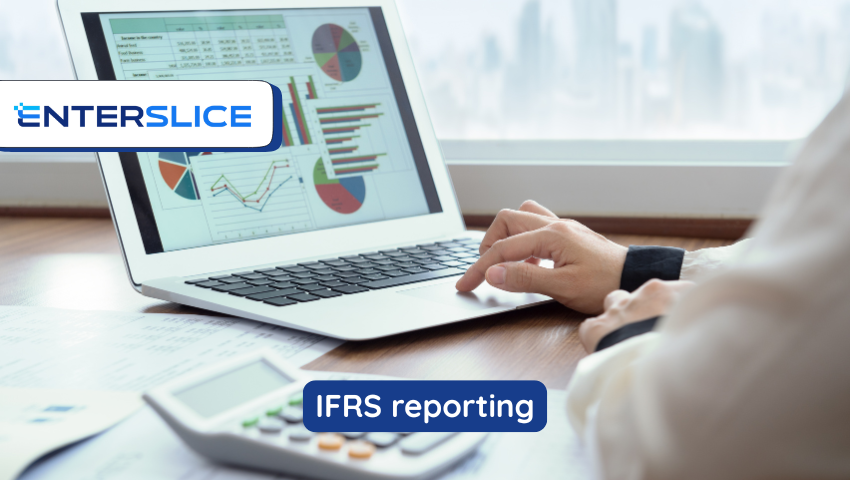
by Advika | Oct 10, 2025 | Others
If you’ve ever wondered how global companies present their financials on a common platform, the answer lies in IFRS reporting. IFRS stands for International Financial Reporting Standards — a set of accounting rules that aim to bring consistency, transparency, and comparability to financial statements across borders.
Businesses adopt IFRS reporting to align with international practices, especially when dealing with investors, foreign stakeholders, or cross-border operations. But executing it correctly is not trivial. Many teams struggle with interpreting principles, handling complex estimates, and keeping pace with standard updates. In this article, I’ll walk you through the essentials, pain points, and smart strategies to manage IFRS reporting with confidence.
The Core Principles Behind IFRS Reporting
Understanding the spirit behind the rules is as important as applying the rules themselves.
First, IFRS is principle-based rather than rule-based. Rather than prescribing step-by-step recipes for every scenario, it demands judgment, consistency, and disclosure. You must interpret how principles apply to your transactions, which requires both accounting insight and industry experience.
Second, IFRS calls for faithful representation, relevance, comparability, and understandability. You don’t just record transactions — you tell a story that stakeholders can trust. That means estimates, judgments, and assumptions must be clearly documented and disclosed.
Third, changing standards is part of the journey. New standards or amendments can affect how you present financials or what you must disclose. Staying current is critical to credibility.
Common Challenges in IFRS Reporting
Transitioning from a local accounting standard or managing IFRS in daily operations often reveals several pain points. Let’s explore the most frequent stumbling blocks.
Estimations and Judgments
Many IFRS standards require making estimates (for example, impairment of assets, allowances for credit losses, or useful lives of property). Two companies might arrive at different numbers for the same type of asset, because the judgments differ. Without clear rationale and robust backup, your estimates can be questioned by auditors or investors.
Data, Systems, and Internal Controls
IFRS reporting often demands granular data and traceability. Legacy systems or Excel sheets may not suffice when multiple scenarios, adjustments, and disclosures are needed. Weak internal controls or lack of audit trails can amplify risk of errors. A good control environment, reconciliation processes, and system support are vital.
Lease Accounting, Revenue, and Financial Instruments
Complex standards like IFRS 16 (leases), IFRS 15 (revenue from contracts), or IFRS 9 (financial instruments) tend to generate the most headaches. For example, converting operating leases to balance-sheet lease liabilities under IFRS 16, or fair valuing financial instruments, involves multiple moving parts. Mistakes here impact many lines of your financials.
Compliance with Frequent Changes
Standards evolve. New ones get introduced, existing ones change, and disclosures expand. For example, IFRS 18 (new presentation and disclosure standard) is set to replace IAS 1, bringing changes to how profit or loss is laid out and what non-IFRS measures you must reconcile. You need a process in place to monitor updates and assess impact.
Cross-border and Currency Issues
If your business operates in multiple countries, you might need to deal with different functional currencies, translation adjustments, and local standards. Consolidation across subsidiaries can complicate the process, especially when combining local GAAP and IFRS entities under a single set of financials.
Best Practices to Streamline Your IFRS Reporting
Knowing the challenges is half the battle — here are actionable ways to manage them effectively.
Build a Strong Foundation with Policy Documentation
Start by documenting your accounting policies, assumptions, and decision framework. This includes how you assess impairment, approach lease modifications, handle provisions, etc. Clear documentation helps everyone stay aligned and makes your numbers defensible during audit or review.
Use Robust Systems and Automation
Moving from manual spreadsheets to dedicated accounting or reporting software pays off. A good system helps with versioning, audit trails, automated adjustments, scenario modeling, and validation checks. Integrations between modules (e.g. ERP, lease module, fixed assets) reduce reconciliation errors.
Engage Expertise and Continuous Training
Because IFRS leans on judgment, consider including experienced accountants, technical advisors, or external consultants when dealing with complex standards. Also invest in ongoing training for your finance team — especially when new standards or amendments come into play.
Establish Governance, Controls & Review Cycles
Set up a calendar of reviews, internal controls, cross-check processes, and peer reviews before finalizing the statements. Incorporate a review by technical accounting specialists who can spot gaps or inconsistencies ahead of auditors.
Monitor Standard Updates and Plan Ahead
Stay subscribed to IASB exposure drafts, local standard-setting bodies, and professional networks. When a change is proposed, conduct impact assessments early (e.g., for IFRS 18, which becomes effective in 2027), so you aren’t caught off guard.
Consider Outsourcing or Shared Services
Many companies, especially those with limited internal bandwidth, outsource parts of IFRS reporting or maintain a shared services center. Outsourced experts can offer efficiency, domain knowledge, and up-to-date standard awareness. In fact, in surveys, a high percentage of CFOs cited outsourcing IFRS compliance as a solution to lighten internal burden.
Practical Steps to Get Started (or Improve)
-
Perform a gap analysis: Compare your current local practices against IFRS requirements, identify the gaps, and plan remediation.
-
Prioritize high impact standards (leases, financial instruments, impairment) where errors are most likely.
-
Roll out pilot trials or mock reporting cycles to test new adjustments before going live.
-
Document all judgments and backup evidence at every step.
-
Maintain close communication with auditors — early engagement helps reduce surprises.
-
Set up a monitoring team or committee that tracks standard changes, industry trends, and emerging disclosure expectations (e.g. climate-related risks).
By embedding these steps, you reduce risk, speed up reporting, and build credibility over time.
FAQs
1. When should a company transition to IFRS reporting?
Typically, a private or public entity shifts to IFRS when it has global stakeholders, seeks foreign investment, or is mandated by local law. The transition often happens at a fiscal year start, with opening balances restated under IFRS.
2. How do you deal with leases under IFRS?
Under IFRS 16, most leases are capitalized on the balance sheet as right-of-use assets and corresponding lease liabilities. The lease cost is split into amortization and interest. Variable lease payments or short-term leases may be exempt under certain conditions.
3. Can estimates or judgments be challenged by auditors?
Yes. Auditors may question assumptions lacking support or consistency. That’s why robust documentation, sensitivity analyses, and peer review are critical to defend your decisions.
4. What happens if a company fails to comply with IFRS?
Non-compliance can erode investor trust, trigger regulatory issues, fines, restatements, or qualified audit opinions. In highly regulated environments, it might also affect the company’s access to capital markets.
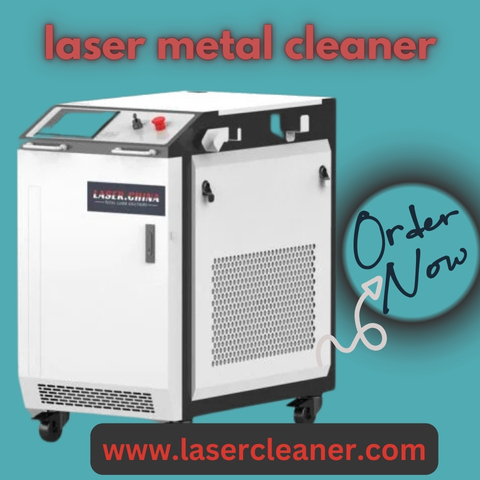
by ALI65 | Oct 10, 2025 | Others
Keeping metal surfaces spotless and corrosion-free is essential in industries ranging from automotive to aerospace. Traditional cleaning methods often involve harsh chemicals, abrasive blasting, or labor-intensive scraping — all of which can damage materials and harm the environment. Enter LaserCleaner, a cutting-edge solution designed to make metal maintenance faster, safer, and more efficient. The laser metal cleaner technology is not only redefining surface treatment but also setting new sustainability standards across multiple sectors.
Precision Cleaning for Modern Industries
The laser metal cleaner from LaserCleaner stands out for its exceptional precision. Unlike chemical or mechanical cleaning, laser cleaning works through a focused beam of light that vaporizes contaminants without harming the substrate. This precision allows for cleaning delicate parts, fine welds, and complex geometries with absolute accuracy.
Whether you’re restoring historical metal artifacts or prepping surfaces for coating, LaserCleaner’s advanced system ensures a residue-free, perfectly clean surface every time.
Eco-Friendly and Chemical-Free Operation
Environmental responsibility is a growing concern for manufacturers, and LaserCleaner offers a cleaner, greener alternative. The laser cleaning process is completely chemical-free, producing no secondary waste or toxic runoff. By replacing solvent-based cleaning and sandblasting, it helps industries meet strict environmental regulations while improving workplace safety.
With zero consumables and minimal maintenance, LaserCleaner also lowers operational costs—making it an ideal long-term investment for businesses focused on sustainability and profitability.
Boosting Productivity Through Automation
Speed and consistency are critical in any production line. LaserCleaner’s innovative laser metal cleaner systems integrate seamlessly with automated setups, dramatically increasing throughput. The precision-controlled laser beam can target specific areas with adjustable power settings, ensuring optimal cleaning without downtime.
From removing rust and paint to cleaning molds or preparing weld seams, LaserCleaner enables operators to achieve consistent results across multiple workpieces—reducing manual labor and enhancing productivity.
Safe, Non-Abrasive Surface Treatment
Traditional methods like sandblasting or chemical stripping can degrade the integrity of metal surfaces over time. LaserCleaner’s technology is non-abrasive, ensuring that only unwanted contaminants are removed. This makes it perfect for cleaning sensitive metals like aluminum, copper, and stainless steel.
In industries where precision and quality are paramount—such as electronics, aerospace, and automotive manufacturing—LaserCleaner provides a safer and more reliable alternative that preserves the material’s original properties.
Cost Efficiency and Long-Term Value
Investing in a laser metal cleaner pays off through long-term savings. Since laser cleaning doesn’t require consumables like chemicals, brushes, or abrasive media, operational costs remain low. Maintenance is minimal, and the durable laser systems from LaserCleaner are built for continuous, high-performance use.
Additionally, the reduction in labor time and waste disposal expenses further boosts overall efficiency. Over time, the savings in materials, energy, and downtime make LaserCleaner a highly cost-effective solution for industrial cleaning needs.
Versatile Applications Across Industries
LaserCleaner’s systems are versatile and adaptable for multiple applications—ranging from rust removal and surface preparation to coating and oxide layer removal. Industries such as shipbuilding, power generation, and precision engineering rely on laser cleaning for its superior accuracy and repeatability.
The technology’s flexibility also allows it to handle everything from large industrial machinery to intricate components, ensuring consistent quality across all levels of operation.
Final Thoughts
The rise of laser metal cleaner technology marks a new era in industrial surface treatment. With its eco-friendly operation, unmatched precision, and long-term cost efficiency, LaserCleaner is helping industries worldwide transition toward smarter, safer, and more sustainable practices.
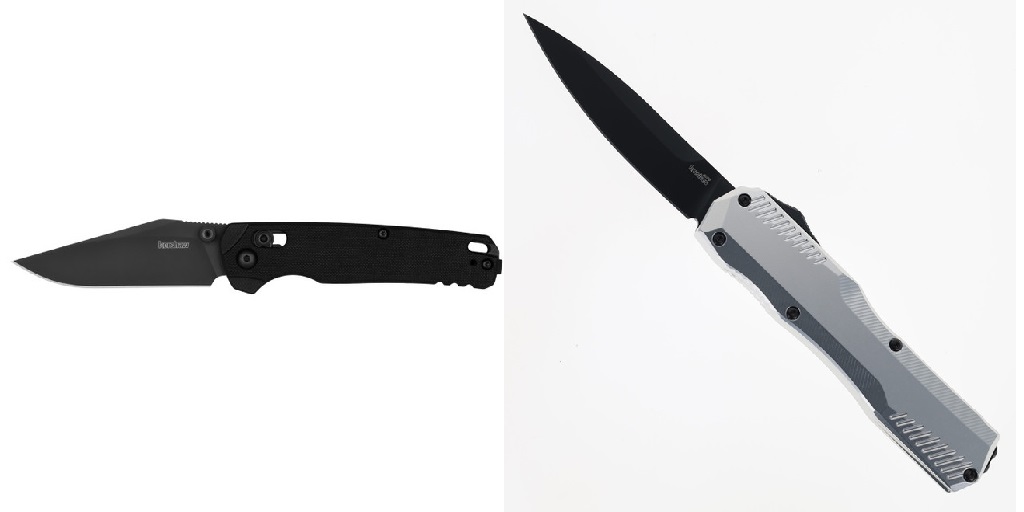
by tonystark | Oct 10, 2025 | Others
If you’re in the market for a new Kershaw pocket knife and are a brand fanatic, and you don’t have a Leek yet, something’s up with that. All avowed fans of Kershaw should have at least one Leek in their collection, but it’s even better as an EDC option.
Here are some of the things that make the Leek a consistent bestseller.
Perfect Size
As would be an important prerequisite for any pocket knife, the Kershaw Leek is sized just right for EDC, and is a highly versatile knife.
With a 3” blade, it perfectly straddles the “just right” category of blade sizes, as anything smaller is a bit diminutive, but once you get to 4”, things get a little bit more unwieldy. In other words, the Leek is the perfect size.
Unique and Utilitarian Blade Profile
In the EDC category, the Leek is one of those knives that capitalizes on the popularity of the Wharncliffe profile.
With a gently sloped spine, the Leek sports a very fine point that’s well adapted to piercing tasks, but more robust than a needle point, while also preserving a good amount of edge for cutting tasks.
This makes the Leek highly adaptable and valuable as an EDC knife.
Great Steel
While there is more than one version of this Kershaw pocket knife (more on that in a second) the flagship Leek is made with a 12C28N stainless steel blade, that is exceptionally well suited to resisting corrosion, while also being able to take a ridiculously sharp edge and hold it fairly well – all without being too hard to resharpen.
Fast Deployment
Like many other Kershaw pocket knives, the Leek is equipped with an assisted opening mechanism, enabling rapid and safe deployment, even with one hand.
Safety
The Leek is also a remarkably safe knife, with a Tip-Lock that secures the blade when closed, preventing accidental deployment.
A Strong Lock
Unlike so many other EDC knives which are made with more affordable liner locks, the Leek is outfitted with a frame lock that is stronger and more reliable, while still being easy to operate, even with one hand.
Solid Construction
The all-steel construction of the basic Leek is dense and tough, and won’t let you down even if you have to put the knife to harder-than-usual use every once in a while.
Multiple Variants
If the all-steel version of this Kershaw pocket knife isn’t cutting it for you, rest easy. The Leek has been redone and reimagined more than perhaps any other knife in the Kershaw lineup, and there are variants with other blade steels, handle scales, finishes, colors, and much more.
Made in the United States
Lastly, if you’re looking for a solid option in a little EDC knife that will outperform and exceed your expectations, and the Leek fits the bill, add this to the list of virtues: it’s made in the United States. Also, for what it’s worth the Leek is covered by a limited lifetime warranty so you can buy with peace of mind.
Price
One more bonus: this is not a particularly expensive Kershaw pocket knife, so that’s just one more reason to love the thing.
Here for a New Kershaw Pocket Knife?
It’s no surprise why the Leek is a consistently best-selling Kershaw pocket knife, but whether you want one of these or some other model, make your first visit online to White Mountain Knives, where you can explore this and other Kershaw models, including fixed blades. Plus, White Mountain Knives has a lot of exclusives too.
For more information about Swiss Army Knife Tools and Good Pocket Knife Brands Please visit: White Mountain Knives, LLC.






